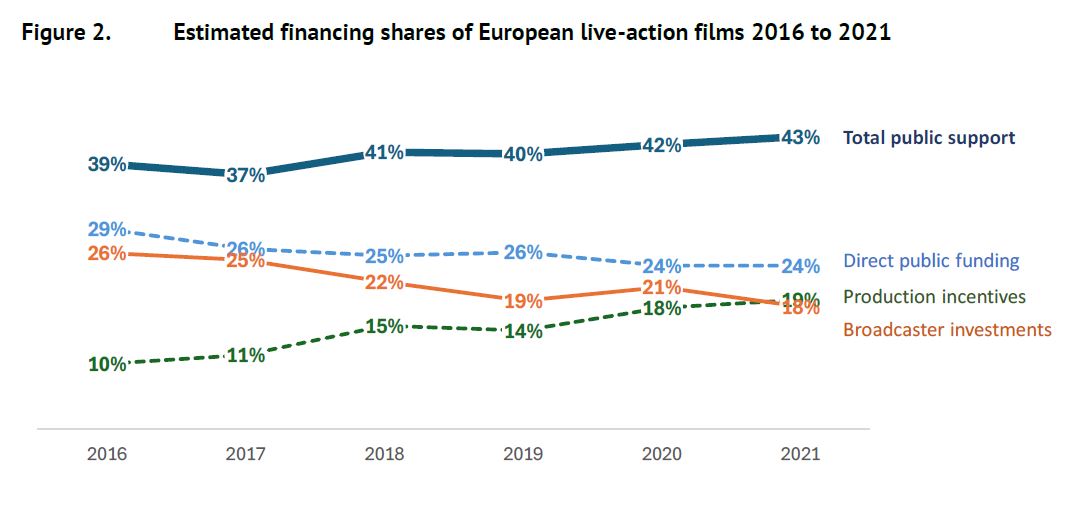Download "State aid and the audiovisual sector"
This brand new report - State aid and the audiovisual sector - explores the concept of state aid to support the creation and distribution of films, series and other audiovisual content in Europe. The report also examines the legal framework governing state aid, and the specific ways in which it is used to support the various activities involved in creating an audiovisual work.
The authors open chapter one by providing an overview of state aid for audiovisual works in the European Economic Area (EEA - EU 27 plus Norway, Iceland and Liechtenstein). They discuss the scope and importance of public funding in promoting cultural diversity and supporting the creation of various audiovisual productions. This chapter also outlines different forms of state aid, including grants, fiscal incentives, and other financial support mechanisms. In addition, it highlights recent trends in public support for the European film and audiovisual sectors.

Kanzler M., Fiction film financing in Europe: A sample analysis of films released in 2022, European Audiovisual Observatory, Strasbourg, 2025
Chapter two presents the legal framework of state aid benefitting audiovisual productions in the European Economic Area. It highlights the core principle of the incompatibility of state aid with the European internal market. This principle aims at preventing government intervention that could unfairly distort competition and harm the internal market.
The authors outline the process for assessing state aid regarding audiovisual works, starting with the methods for determining whether the public support qualifies as state aid. They explain the scenarios in which aid may be exempt from notification and round off this chapter by zooming in on the existing complaint mechanism, whereby interested parties can challenge allegedly unlawful, and alleged misuse of, state aid through the European Commission. This may lead to a potential recovery decision if the aid is found to be incompatible with the internal market.
Chapter three presents an overview of the aid schemes which were communicated (notified) to the European Commission between 2020 and 2024 for assessment and greenlighting based on the rules contained in the Cinema Communication. The authors highlight the fact that over 30 mechanisms were notified to the European Commission, with 12 countries regularly submitting notifications (Belgium, Denmark, France, Germany, Ireland, Italy, Malta, Poland, Slovenia, Spain and the United Kingdom). This chapter outlines four key objectives in the granting of this aid: cultural preservation and promotion, economic support and competitiveness, innovation and creativity, and industry development.
Finally, chapter four highlights certain new challenges for state aid and how these are met. In recent years, issues such as environmental sustainability, diversity and gender equality, and social inclusion have made their way into funding considerations and application conditions. In addition, state aid schemes increasingly support innovative projects, promoting the development of new forms of cultural expression. Some countries also reward films achieving foreign artistic recognition and are focusing on accessibility for people with visual or hearing impairments, showcasing a broader commitment to social and cultural values within the film industry.
A must read if you want to get a state of the art overview of state aids in the audiovisual sector in Europe.
